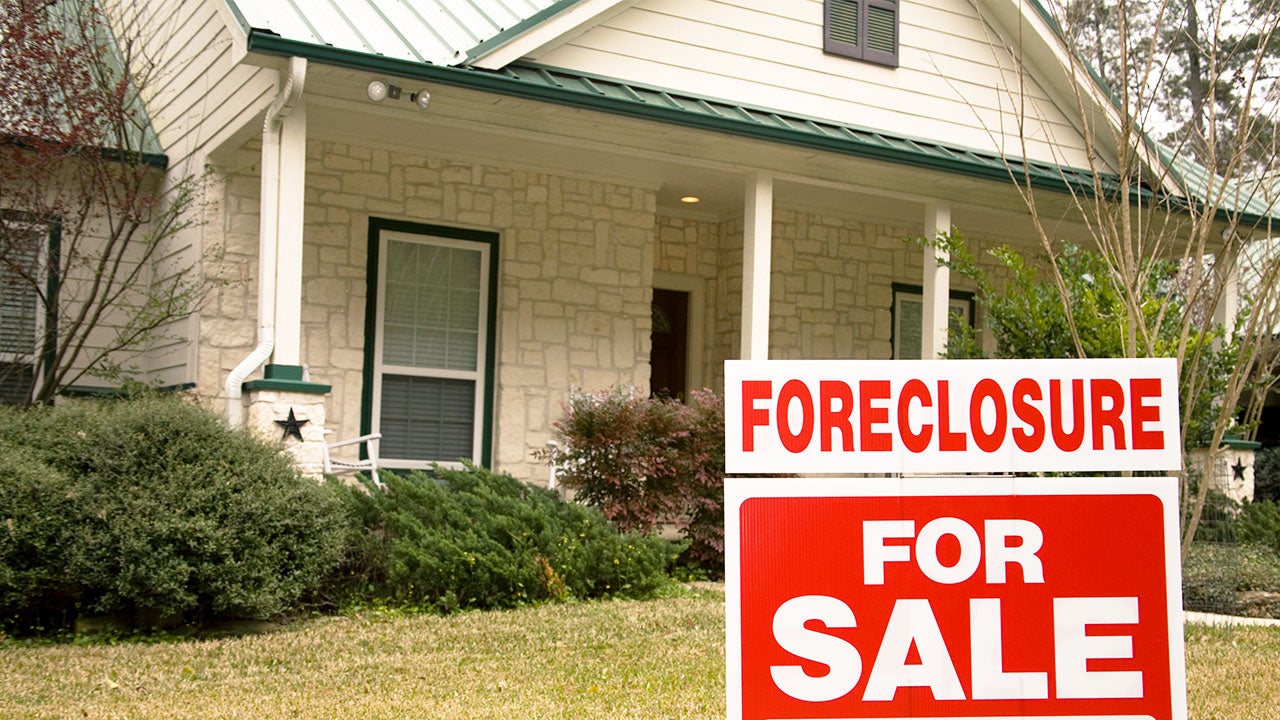What is mortgage forbearance?

Key takeaways
- Mortgage forbearance lets homeowners temporarily stop or lower mortgage payments during a short-term financial setback.
- You must request forbearance from your lender. You won’t receive it automatically.
- You must typically provide proof of financial hardship to qualify for forbearance.
What is mortgage forbearance?
Mortgage forbearance is an arrangement that allows borrowers to pause or temporarily lower their mortgage payments while dealing with a short-term crisis, such as a job loss or illness. Forbearance can prevent homeowners from becoming delinquent with their mortgage and help potentially avoid foreclosure.
According to the Mortgage Bankers Association, approximately 180,000 homeowners were in forbearance as of March 2025.
Who is eligible for mortgage forbearance?
To be sure you’re eligible for mortgage forbearance, you must ask your lender or servicer directly. You may be eligible if you:
- Were affected by a natural disaster
- Survived a traumatic event, such as a terrorist attack or other violent incident
- Lost your job
- Are going through a separation or divorce
- Experienced an illness or injury leading to unexpected medical bills or a loss of income
- Suffered the death of a family member and a resulting loss of wages
Be prepared to demonstrate proof of your financial hardship and comply with your lender’s other forbearance requirements. It’s also crucial to contact your lender and apply quickly once you know you’ll have difficulty making payments.
Keep in mind: Whatever your reason for requesting forbearance, it’s essential to be sure your request has been granted before you stop making payments. Otherwise, you could become delinquent on your mortgage, which can seriously impact your credit.
Mortgage forbearance vs. loan modification
Mortgage forbearance is a temporary solution for those experiencing short-term financial hardship. A loan modification, on the other hand, changes your original mortgage terms permanently to make your payments more affordable. You must still make payments, but your lender or servicer may reduce your interest rate or extend your repayment term, among other methods, to decrease what you owe each month.
You’ll need to provide proof of financial hardship to be granted both forbearance and a modification.
| Forbearance | Loan modification | |
|---|---|---|
| Length of time |
3-6 months, may be extended for up to 12 months |
Permanent |
| Type of relief | Payments are suspended or reduced temporarily |
Payments are reduced for the remaining term of the mortgage |
| Caveats |
May limit your ability to refinance the loan or sell your home for a period of time |
May extend your repayment schedule, impacting your amortization and interest payments |
Effects of forbearance on a mortgage
Does mortgage forbearance affect your credit?
Entering a forbearance period with your mortgage is unlikely to hurt your credit. While your loan is in forbearance, your lender will report you as current on payments even if you’re not.
Again, this is assuming you’re granted forbearance before you pause or decrease your mortgage payments. Becoming behind on your mortgage without an agreement with your lender will seriously harm your credit.
How does mortgage forbearance affect your interest rate?
Mortgage forbearance doesn’t necessarily change the interest rate on your loan, although your lender or servicer may adjust it during the process. And if your loan term is extended to allow you to make up your missed payments, that will also affect your amortization schedule and the amount of interest you pay overall, says Drew Demers, partner and real estate lawyer at Foster Graham Milstein & Calisher in Denver.
Demers recommends asking the following questions to ensure you understand your forbearance arrangement:
- Do I have to pay interest or escrow advances during this time, or is this a complete payment deferral?
- Is the loan maturity date being extended?
- Will the lender recapture the deferred payments through a balloon payment at loan maturity, an extended maturity date or some other catch-up method?
Will forbearance affect refinancing?
Yes. Refinancing is typically not permitted while your loan is in forbearance. However, most types of mortgages — including those backed by Fannie Mae and Freddie Mac, as well an FHA or USDA loan — allow you to refinance after your forbearance period ends and you’ve made three consecutive, standard payments.
VA loans may be eligible for refinancing sooner if you can demonstrate that your financial situation has improved.
Will forbearance impact my future ability to buy a home?
If your mortgage is in forbearance, you’ll want to hold off on buying a new home until your financial situation stabilizes. However, once you can prove your income is predictable and large enough to afford the mortgage, you can consider applying for a mortgage again.
Pros and cons of mortgage forbearance

Pros
- Temporarily lowers or suspends monthly mortgage payments
- Can help prevent foreclosure or pause proceedings if they’ve already begun
- Allows you to retain ownership of the home and sell it in the future, if you wish to do so
- May involve flexible repayment options

Cons
- Restricts your ability to refinance the loan
- Payments might increase after the forbearance period ends
- Second homes or investment properties may not be eligible for this protection
Is mortgage forbearance a good idea?
Mortgage forbearance can allow you to stay current on your mortgage during a stressful financial period, giving you time to recover your income and get back on track. But it doesn’t make sense for every homeowner who’s in a tough spot. Forbearance may work for you if you:
- Qualify. You must also be able to provide evidence that your hardship affected your income.
- Expect your situation to be temporary. If you’re experiencing a permanent loss of income, you’ll want to explore alternatives to forbearance.
- Have a plan for when the forbearance period ends. Even if you expect to resume your previous income or recover from the setback, you’ll need to catch up on your payments. Make sure your lender’s plan for doing so is realistic for you.
How to apply for forbearance
If you’re ready to seek mortgage forbearance, you’ll take these steps:
- Gather documentation of your financial hardship. This may include medical bills, correspondence related to a layoff at work, bank statements or other paperwork.
- Reach out to your lender or servicer’s loan relief or loss mitigation department. From there, you’ll either need to formally request forbearance or explore other relief options.
- Keep a record of all communications with your lender. Ensure you receive a written forbearance agreement before you stop or reduce your payments.
What happens when mortgage forbearance ends?
Forbearance is temporary, and when it ends, you’ll be required to repay the payments you missed or any partial payments. Your lender or servicer may require one of several possible repayment methods:
- Lump-sum payment or reinstatement plan: You’ll make up the payments in a one-time lump sum — also referred to as a reinstatement plan — immediately after the forbearance period ends.
- Short-term repayment plan: You’ll repay what you missed over a short window, commonly six months.
- Deferral: You’ll continue repaying your mortgage beyond your original loan term. For example, if you have a 30-year mortgage and were in forbearance for six months, you’ll resume making your usual payments for the remainder of that 30-year term. Then, you’ll add six months of repayments to compensate for what you missed while in forbearance.
- Loan modification: If your forbearance period is ending and your financial situation hasn’t improved, you may consider applying for loan modification, which makes permanent changes to your loan in order to lower your monthly payment.
While the terms mortgage deferral and forbearance are often used interchangeably, the processes are not identical. While both allow suspended mortgage payments due to financial hardship, interest continues to accrue during forbearance. Loan deferral pauses the accrual of interest, but it stipulates that missed payments will be tacked on to the end of your original loan term.
Other ways to get help paying your mortgage
There may be other options if you don’t qualify for mortgage forbearance.
- Loan modification. If your mortgage payments are unaffordable longer term, a loan modification can permanently change your loan terms to reduce your payments.
- Assistance funds. Lenders, government agencies and nonprofits may all offer mortgage assistance to homeowners who can prove financial need.
- A short sale. If your home is at risk of imminent foreclosure, your lender may let you sell it for less than the appraised value. While you won’t make a profit, in some cases, the lender will take the loss and consider your debt settled.
- Refinance. If rates have decreased since you first bought your home, a refinance may lower your monthly payment. However, you’ll have to pay closing costs, so depending on your situation, this may not be an option.
FAQ
Why we ask for feedback Your feedback helps us improve our content and services. It takes less than a minute to complete.
Your responses are anonymous and will only be used for improving our website.







